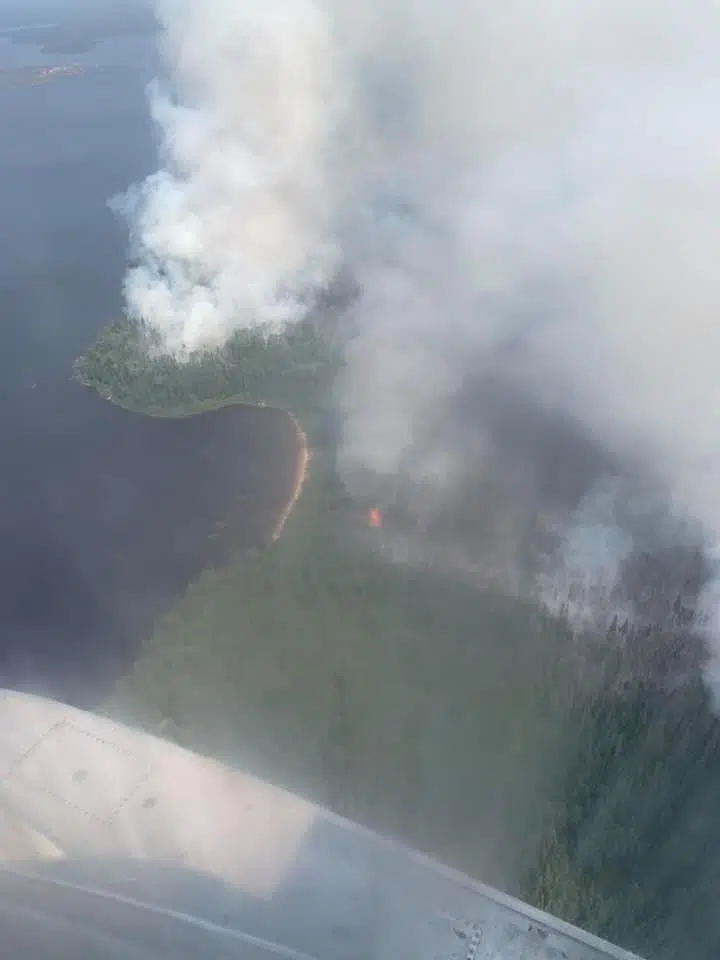Canadian Wildfires: Minnesota Air Quality Plummets

Table of Contents
Health Impacts of Degraded Air Quality in Minnesota
Wildfire smoke contains a complex mix of harmful pollutants, including particulate matter (PM2.5), carbon monoxide, and volatile organic compounds. These pollutants directly impact respiratory and cardiovascular health. Breathing in wildfire smoke can exacerbate existing conditions and trigger new ones.
-
Respiratory Illnesses: Wildfire smoke significantly worsens asthma, bronchitis, and pneumonia symptoms. Individuals with these conditions may experience increased coughing, wheezing, shortness of breath, and chest tightness. The fine particulate matter in smoke can deeply penetrate the lungs, causing inflammation and irritation.
-
Cardiovascular Issues: Studies show a strong link between exposure to poor air quality and cardiovascular problems, including heart attacks and strokes. Wildfire smoke can increase blood pressure and heart rate, straining the cardiovascular system.
-
Vulnerable Populations: Children, the elderly, and individuals with pre-existing heart or lung conditions are particularly vulnerable to the health effects of wildfire smoke. Their respiratory and immune systems are often less resilient, making them more susceptible to severe complications.
-
Specific Symptoms to Watch For:
- Burning eyes, nose, and throat
- Headaches
- Fatigue
- Shortness of breath or difficulty breathing
- Coughing and wheezing
- Nausea
Environmental Consequences of Canadian Wildfires on Minnesota
The impact of Canadian wildfires extends far beyond human health, significantly affecting Minnesota's environment.
-
Acid Rain: Wildfire smoke releases pollutants that contribute to acid rain. Acid rain can harm lakes and forests, damaging sensitive ecosystems and impacting water quality. This acidification can lead to decreased biodiversity and harm aquatic life.
-
Reduced Visibility and Ecosystem Health: The haze caused by wildfire smoke significantly reduces visibility, impacting both human activities and the overall health of the ecosystem. Reduced sunlight can hinder plant growth, disrupting the delicate balance of the food chain.
-
Long-Term Effects: The long-term consequences of prolonged exposure to wildfire smoke on Minnesota's plant and animal life are still being assessed. However, researchers anticipate significant ecological disruptions, potentially impacting biodiversity and species populations.
Preventative Measures and Personal Safety Guidelines
Protecting yourself from the harmful effects of wildfire smoke is crucial during periods of poor air quality. Here are some essential preventative measures:
-
Stay Indoors: When the AQI is high, stay indoors as much as possible to minimize exposure to wildfire smoke. Keep windows and doors closed.
-
Use an Air Purifier: Investing in an air purifier with a HEPA (High-Efficiency Particulate Air) filter can significantly improve indoor air quality by removing fine particulate matter from the air.
-
Monitor Air Quality Reports: Regularly check air quality reports provided by the Minnesota Pollution Control Agency (MPCA) to stay informed about current conditions and AQI levels in your area.
-
Reduce Outdoor Activities: Limit strenuous outdoor activities when the AQI is high, as increased physical exertion leads to more rapid and deeper breathing, increasing smoke inhalation.
Governmental Response and Air Quality Monitoring in Minnesota
The Minnesota Pollution Control Agency (MPCA) plays a vital role in monitoring air quality and issuing public health advisories.
-
MPCA Monitoring: The MPCA continuously monitors air quality levels across the state using a network of monitoring stations. This data informs the public about current conditions and helps guide public health recommendations.
-
Emergency Response Plans: State authorities have emergency response plans in place to address situations of severely degraded air quality, including public health advisories and recommendations for vulnerable populations.
-
Governmental Initiatives: While the wildfires themselves are beyond the control of the Minnesota government, the MPCA and other agencies are working to inform the public and mitigate the impact of the smoke through public awareness campaigns and emergency preparedness measures.
Understanding and Mitigating the Effects of Canadian Wildfires on Minnesota Air Quality
The Canadian wildfires have had a profound impact on Minnesota's air quality, leading to significant health and environmental consequences. The health risks associated with wildfire smoke are substantial, particularly for vulnerable populations. Protecting yourself and your family requires staying informed about AQI levels, taking preventative measures, and heeding the advice of the Minnesota Pollution Control Agency (MPCA). By understanding the implications of "Canadian Wildfires: Minnesota Air Quality Plummets," we can better protect our health and environment. Check the MPCA website regularly for updates on air quality conditions and health advisories. Staying informed is the first step in mitigating the effects of this ongoing crisis.

Featured Posts
-
 Tudor Pelagos Fxd Chrono Pink A Comprehensive Guide To The New Release
May 31, 2025
Tudor Pelagos Fxd Chrono Pink A Comprehensive Guide To The New Release
May 31, 2025 -
 Zverevs Road To The Semifinals At The Bmw Open
May 31, 2025
Zverevs Road To The Semifinals At The Bmw Open
May 31, 2025 -
 Sagging Housing Market Realtors Report Crisis Level Sales
May 31, 2025
Sagging Housing Market Realtors Report Crisis Level Sales
May 31, 2025 -
 Melanie Thierry Et Gilles Lellouche Leur Naufrage Dans Soudain Seuls Ce Soir A La Tele
May 31, 2025
Melanie Thierry Et Gilles Lellouche Leur Naufrage Dans Soudain Seuls Ce Soir A La Tele
May 31, 2025 -
 Indias New Covid 19 Variant Jn 1 A Guide To Symptoms And Precautions
May 31, 2025
Indias New Covid 19 Variant Jn 1 A Guide To Symptoms And Precautions
May 31, 2025
